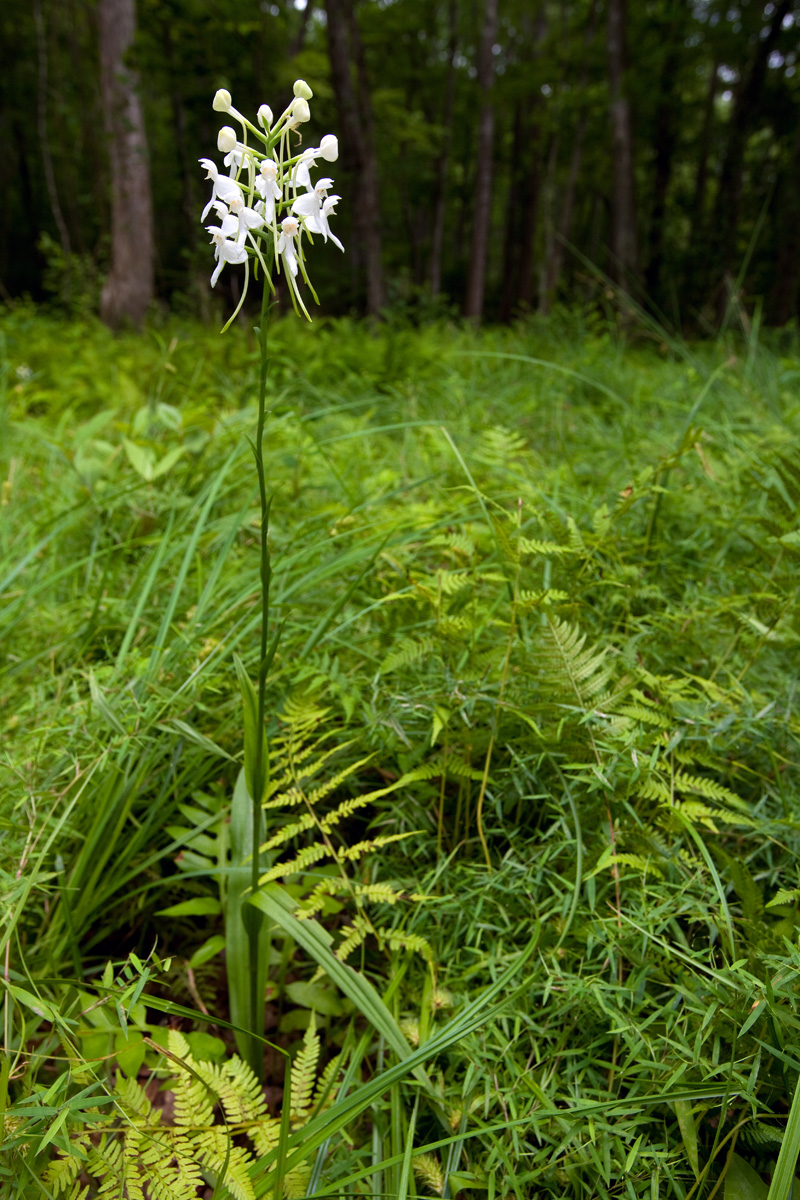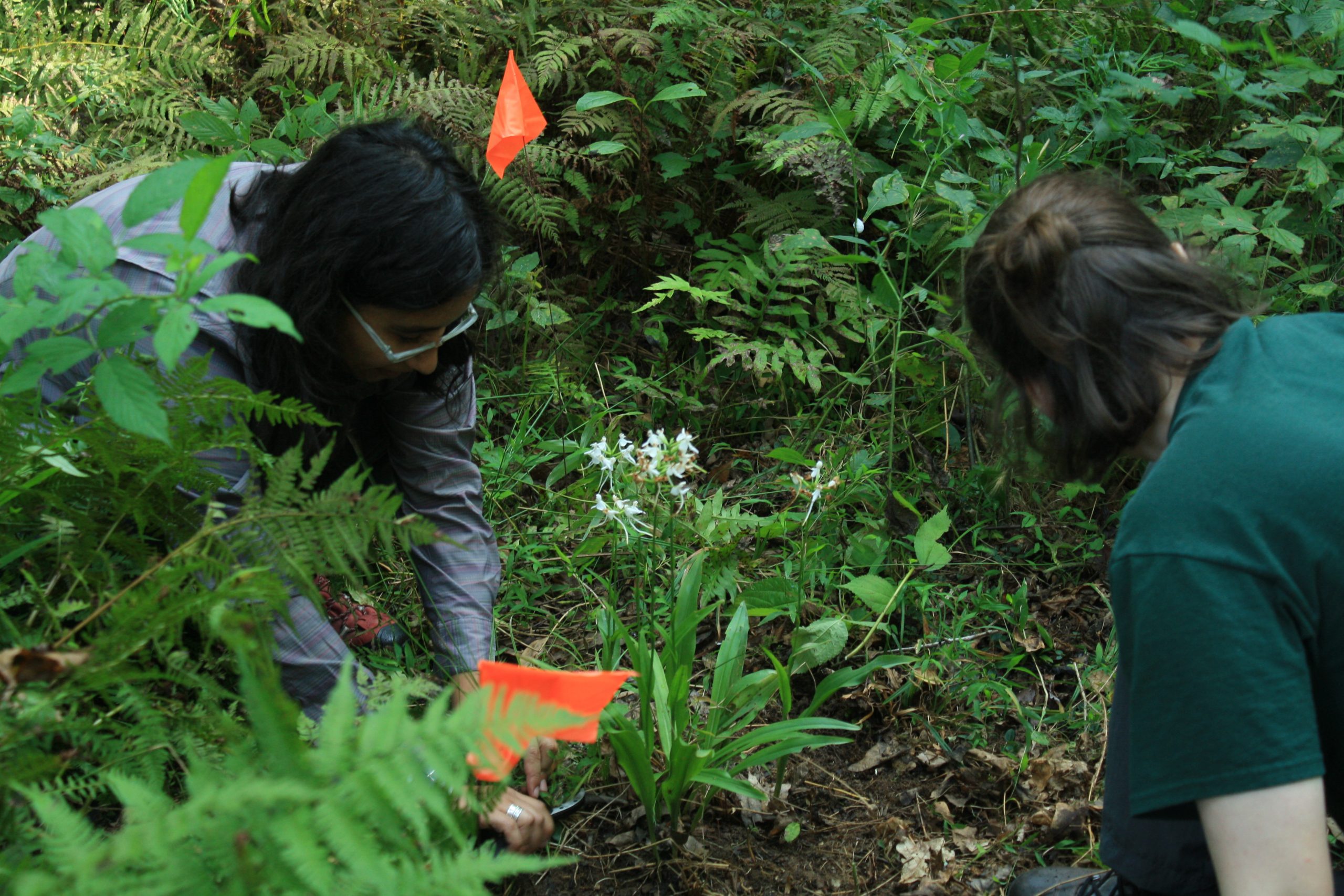Blooming Successes in Georgia
The Atlantic Botanical Garden (ABG) team had hoped to see some population increase of the white fringeless orchid (Platanthera integrilabial), when they went out last summer to monitor one of the restoration sites on privately-owned lands. They had started the project just two years earlier, removing the woody plants shading the area to provide better habitat for the white fringeless orchid and weren’t expecting too much of a change from the remaining three orchids that comprised the original population. The team definitely wasn’t expecting to arrive at the site and find a blooming field of 24 individuals. The whole team excited by the remarkable progress, Emily Coffey, Ph.D., noted how gratifying it was to see the hard work they put in to saving this species paying off.
Though it was just two years of active restoration at this site, the hard work to save the white fringeless orchid started many years ago. Atlanta Botanical Garden has led efforts to collect seed, store seed, propagate, and produce plants for ex situ safeguarding as well as in situ population augmentations since efforts to help the species in Georgia began. They lead an extensive partnership that public agencies, land managers, regulating agencies, interns, and more, and have recently expanded their work into other states in the orchid’s range, North Carolina and Tennessee.

White fringeless orchid is a standout species, with beautiful clusters of delicate white flowers, being considered for the listing under the Endangered Species Act. Threatened by the usual suspects (e.g., habitat loss, invasive species), as well as an increase in shading from woody plants due to a decline in fire and lack of active land management, in addition to roadside management practices such as mowing and herbicide application. When ABG began their work on the species, there were just nine populations in Georgia, hosting 120 individuals. Significantly, six of these populations were on private, unconserved lands.
Dr. Coffey notes that many of the major challenges to saving the species pertain to the need to work on private property. The team needed to introduce land management practices on private lands and set up conservation easements. Outreach became a large part of the project, as convincing private land owners to allow prescribed burns or mimicking fire’s impact through mechanical removal of woody plants was an important step. Some of the properties also had established rights of way – and so some of the outreach was directed at the Georgia Department of Transportation and Georgia Power to alter herbicide use and adjust mowing regimens to allow white fringeless orchid to flower and set seed. Persuading land owners and these large public entities took time – as well as patience and perseverance.
Patience and perseverance also come in handy in tackling the biological challenges of conservation work. ABG has been successful in handling those challenges as well, and not just with white fringeless orchid. The stately flower is just one species of twelve orchids in the garden’s ongoing conservation program. Focused on the Southeastern U.S. and Caribbean, they are applying their myriad of skills to a variety of other species in need. Their projects range from ex situ conservation of Kentucky lady slipper (Cypripedium kentuckiense), geographic surveys and predictive monitoring of many-flowered grass pink (Calopogon multiflorious) and Chapman’s fringed orchid (Platanthera chapmanii), to propagation and reintroduction of cigar orchid (Cyrtopodium punctatum).
For each species they work with, the team makes sure to celebrate the successes where they can. Conservation can be hard, and focusing on successes keeps moral up. Like the day last year where the monitoring team was rewarded with a beautiful bloom. They are excited to see how they have done this year and hopeful that they’ll have another increase in blooms when they survey in August.
